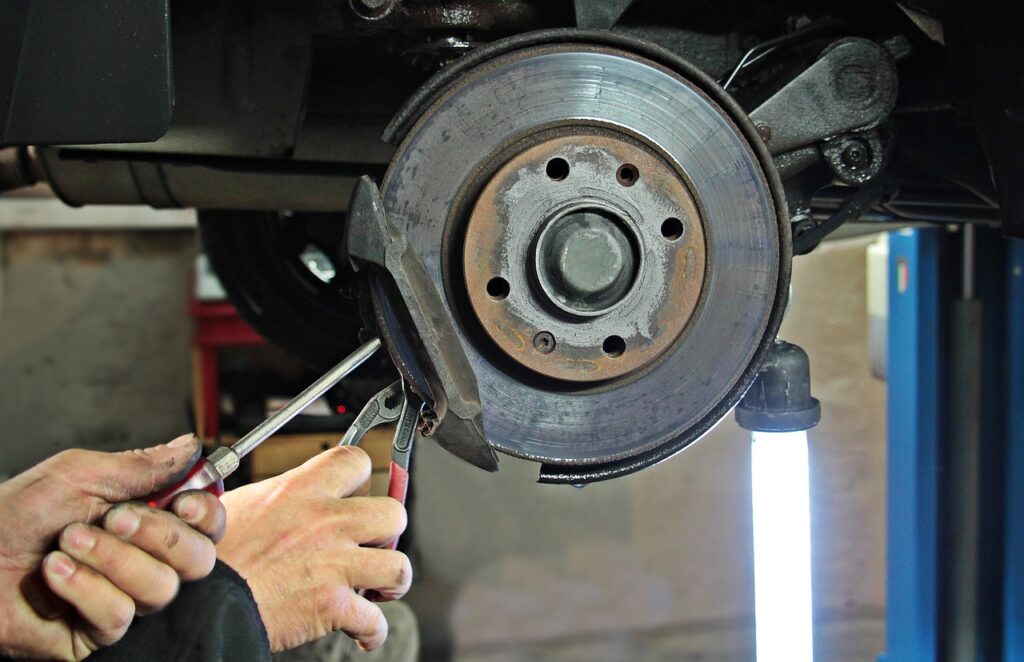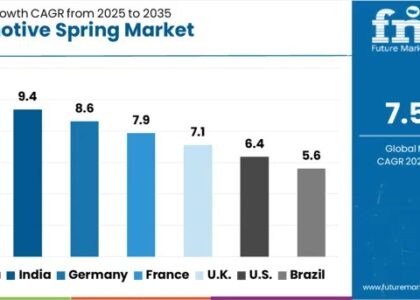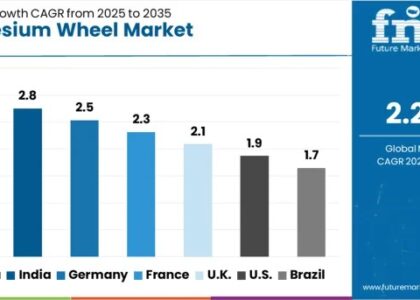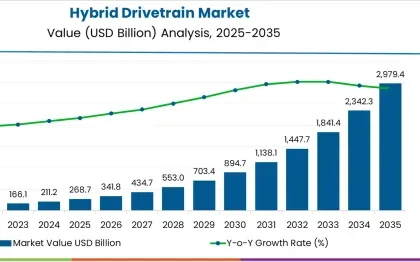
Carbon ceramic brakes, also known as ceramic composite brakes, are a version of fixed caliper disc brakes, which are used in high performance vehicles and supercars. The global Automotive Carbon Ceramic Brakes Market is anticipated to witness a considerable CAGR of 11.2% by value during the period of 2022 and 2028.
The Automotive Carbon Ceramic Brakes Market involves the production, distribution, and integration of carbon ceramic brake systems into vehicles, offering superior braking performance, durability, and weight savings compared to traditional iron brake systems. Carbon ceramic brakes are composed of a composite material consisting of carbon fibers and ceramic matrix, providing high thermal conductivity, low weight, and exceptional braking performance under extreme conditions. Here’s an overview of the Automotive Carbon Ceramic Brakes Market:
Market Overview:
Scope: The market encompasses the development, manufacturing, and deployment of carbon ceramic brake systems for high-performance vehicles, sports cars, luxury vehicles, supercars, and racing applications.
Key Players: Major participants in the market include automotive OEMs, brake system manufacturers, technology providers, and suppliers of carbon ceramic brake components, including brake discs, pads, calipers, and cooling systems.
Market Dynamics: Factors driving the market include increasing demand for high-performance vehicles, growing interest in lightweight materials and advanced braking technologies, rising safety concerns, and regulatory mandates for improved vehicle performance and emissions reduction.
Request a Sample of this Report:
https://www.futuremarketinsights.com/reports/sample/rep-gb-1519
Key Features and Benefits:
Superior Braking Performance: Carbon ceramic brakes offer exceptional braking performance, including shorter stopping distances, improved fade resistance, and consistent brake feel under high-speed braking, aggressive driving, and track conditions, enhancing vehicle safety and driving dynamics.
Reduced Weight: Carbon ceramic brake systems are significantly lighter than traditional iron brake systems, reducing unsprung mass, rotating inertia, and vehicle weight, resulting in improved handling, acceleration, fuel efficiency, and overall performance.
High Thermal Stability: Carbon ceramic brakes exhibit high thermal stability, heat dissipation, and resistance to brake fade, thermal deformation, and brake disc warping under extreme temperatures, ensuring consistent braking performance and durability in demanding driving environments.
Market Trends:
OEM Integration: Automotive OEMs integrate carbon ceramic brake systems as standard or optional equipment in high-performance vehicle models, sports cars, hypercars, and luxury vehicles, offering customers premium braking performance, driving dynamics, and exclusivity.
Aftermarket Upgrades: Aftermarket suppliers offer carbon ceramic brake upgrades and conversion kits for retrofitting existing vehicles with high-performance brake systems, catering to enthusiasts, tuners, and aftermarket customization markets seeking improved braking performance and aesthetics.
Technological Advancements: Technological advancements in carbon ceramic materials, manufacturing processes, and brake system designs drive innovation and performance improvements in carbon ceramic brake systems, enabling lighter, stronger, and more efficient brake components with enhanced thermal management capabilities.
Market Drivers:
Performance and Exclusivity: Consumer demand for high-performance vehicles, luxury cars, and sports cars drives demand for carbon ceramic brakes as premium features that enhance driving dynamics, braking performance, and brand prestige, appealing to performance-oriented drivers and enthusiasts.
Weight Reduction and Performance Optimization: Automotive OEMs prioritize weight reduction, performance optimization, and fuel efficiency improvements by adopting carbon ceramic brake systems to reduce vehicle weight, unsprung mass, and rotating inertia, enhancing handling, acceleration, and overall vehicle dynamics.
Racing and Motorsports: Motorsports, racing events, and performance driving experiences showcase the benefits of carbon ceramic brakes in extreme conditions, driving technology transfer, innovation, and adoption of carbon ceramic brake systems in high-performance street cars and aftermarket applications.
Safety and Advanced Driver Assistance: Carbon ceramic brakes play a crucial role in improving vehicle safety, collision avoidance, and emergency braking systems by providing shorter stopping distances, enhanced brake modulation, and fade resistance under aggressive braking maneuvers and high-speed driving scenarios.
Regulatory Compliance and Emissions Reduction: Regulatory mandates for vehicle safety, emissions reduction, and environmental sustainability drive OEMs to adopt lightweight materials and advanced braking technologies such as carbon ceramic brakes to meet regulatory requirements, emissions standards, and safety ratings.
Customer Demand and Market Differentiation: Customer preferences for premium features, performance upgrades, and customized options in vehicles create opportunities for automotive OEMs to differentiate their products, enhance perceived value, and justify premium pricing with carbon ceramic brake systems as exclusive and desirable options.
Technological Innovation and Cost Reduction: Continuous technological innovation, process improvements, and economies of scale in carbon ceramic brake manufacturing drive down production costs, making carbon ceramic brake systems more accessible and affordable for a broader range of vehicle models and market segments.
Direct Purchase of this Report:
https://www.futuremarketinsights.com/checkout/1519
Challenges:
Cost and Affordability: The high cost of carbon ceramic brake systems compared to traditional iron brakes may limit market penetration, affordability, and mainstream adoption in mass-market vehicles, requiring OEMs to balance performance benefits with cost considerations and value proposition for customers.
Durability and Service Life: Carbon ceramic brake systems require careful handling, maintenance, and operating conditions to avoid premature wear, damage, or degradation of brake components, as excessive heat, aggressive driving, and improper bedding procedures may reduce service life and reliability.
Aftermarket Availability and Accessibility: Availability of carbon ceramic brake components, replacement parts, and aftermarket support may be limited compared to traditional iron brake systems, posing challenges for vehicle owners, tuners, and aftermarket enthusiasts seeking upgrades or replacements for carbon ceramic brakes.
Installation and Retrofitting Complexity: Retrofitting existing vehicles with carbon ceramic brake systems may require specialized tools, expertise, and modifications to accommodate the different dimensions, mounting points, and operating characteristics of carbon ceramic brake components compared to conventional iron brakes.
Customer Education and Awareness: Customer education, awareness, and understanding of carbon ceramic brake technology, benefits, and maintenance requirements may be limited among vehicle owners, drivers, and automotive enthusiasts, requiring OEMs and aftermarket suppliers to invest in marketing, training, and technical support initiatives.
Regulatory Compliance and Certification: Carbon ceramic brake systems must comply with regulatory requirements, safety standards, and certification processes governing automotive brake systems, including performance testing, durability assessments, and environmental regulations, adding complexity and cost to product development and market entry.
Supply Chain Risks and Dependency: The carbon ceramic brake supply chain may be vulnerable to disruptions, material shortages, and production challenges related to raw materials, manufacturing processes, and geopolitical factors, affecting supply chain reliability, lead times, and production capacity for carbon ceramic brake components.
Future Outlook:
Technological Advancements: Continued technological advancements in carbon ceramic materials, manufacturing processes, and brake system designs are expected to drive innovation, performance improvements, and cost reductions in carbon ceramic brake systems, making them more accessible and widespread in automotive applications.
Market Expansion and Diversification: The Automotive Carbon Ceramic Brakes Market is expected to expand and diversify beyond high-performance vehicles to encompass mainstream automotive segments, electric vehicles (EVs), hybrid vehicles, and commercial vehicles, driven by advancements in lightweight materials and demand for advanced braking technologies.
Industry Collaboration and Partnerships: Collaboration between automotive OEMs, brake system manufacturers, technology providers, and research institutions fosters innovation, knowledge sharing, and industry partnerships in carbon ceramic brake technology, driving market growth, product development, and adoption across various vehicle platforms.
Regulatory Support and Incentives: Regulatory support, incentives, and emissions regulations favoring lightweight materials, energy efficiency, and vehicle safety are expected to encourage automotive OEMs to adopt carbon ceramic brake systems as part of their vehicle development strategies, driving market demand and technology adoption.
Sustainable Manufacturing Practices: Sustainable manufacturing practices, recycling initiatives, and circular economy principles are expected to drive advancements in carbon ceramic brake production, waste reduction, and environmental stewardship, minimizing environmental impact and promoting sustainable use of resources.
Consumer Education and Awareness: Increased consumer education, awareness, and understanding of carbon ceramic brake technology, benefits, and maintenance requirements are expected to enhance market acceptance, customer satisfaction, and aftermarket demand for carbon ceramic brake systems, supporting market growth and adoption.
Innovative Applications and Use Cases: Innovative applications, use cases, and emerging technologies such as autonomous vehicles (AVs), connected vehicles (CVs), and electric propulsion systems create opportunities for carbon ceramic brakes to provide enhanced braking performance, energy recovery, and regenerative braking capabilities in next-generation vehicle platforms.
Global Market Expansion: The Automotive Carbon Ceramic Brakes Market is expected to expand globally, driven by demand from automotive markets in North America, Europe, Asia-Pacific, and other regions, as automotive OEMs, aftermarket suppliers, and consumers seek to leverage the benefits of carbon ceramic brake technology for improved vehicle performance and safety.
About Future Market Insights (FMI)
Future Market Insights, Inc. (ESOMAR certified, recipient of the Stevie Award, and a member of the Greater New York Chamber of Commerce) offers profound insights into the driving factors that are boosting demand in the market. FMI stands as the leading global provider of market intelligence, advisory services, consulting, and events for the Packaging, Food and Beverage, Consumer, Technology, Healthcare, Industrial, and Chemicals markets. With a vast team of over 5000 analysts worldwide, FMI provides global, regional, and local expertise on diverse domains and industry trends across more than 110 countries.
Contact Us:
Future Market Insights Inc.
Christiana Corporate, 200 Continental Drive,
Suite 401, Newark, Delaware – 19713, USA
T: +1-845-579-5705
For Sales Enquiries: sales@futuremarketinsights.com
Website: https://www.futuremarketinsights.com
LinkedIn| Twitter| Blogs | YouTube




